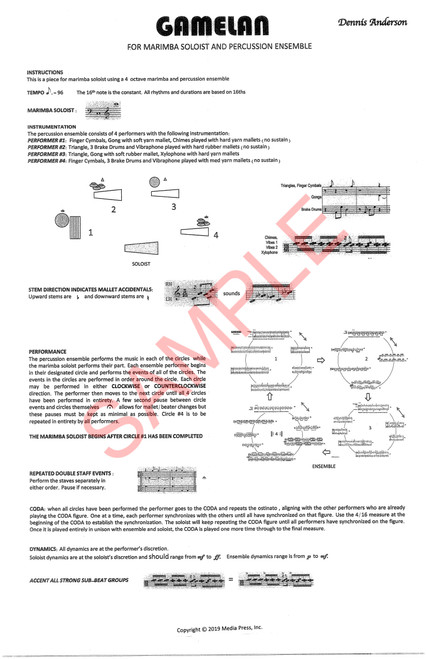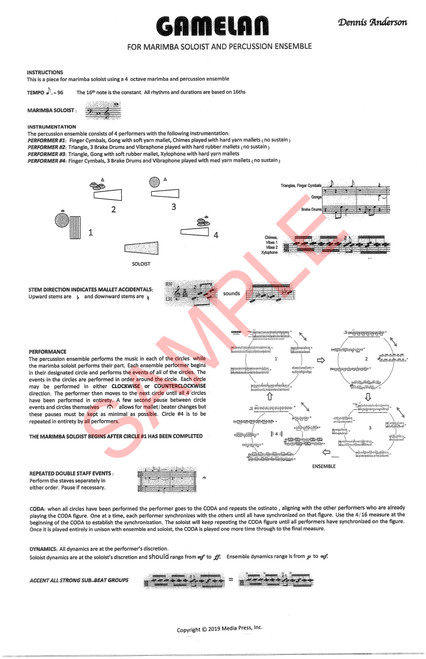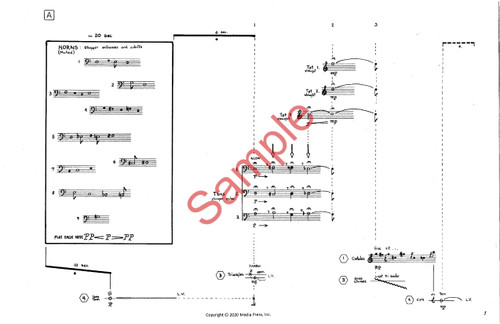Includes parts.
Print size: 11 x 17"
Review from Percussive Notes (2021):
Gamelan
Dennis Anderson
As the title implies, this work pays homage to the ancient form of Indonesian music. The way Dennis Anderson treats the form, rhythms, and meters of this piece is unique, and will yield performances that will all be slightly different from one-another.
The piece has two important entities: the solo marimba and the accompanying quartet. Each has its own instructions of how to proceed through the music. The ensemble parts are written in musical fragments that are printed onto four circles. To progress through the piece, the players perform all the events in their first circle, then move to the next one. When all the circles are completed, the performers move to a notated coda and repeat it until everyone synchronizes and is playing in unison. The solo marimba, on the other hand, is notated in traditional fashion: top-left to bottom-right, then to the repeated coda.
The piece employs a plethora of time signatures, from simple to compound to complex. Further, no two events are the same length, and each circle has between five and eight events. The only aspect that is constant throughout is the given tempo. This causes the players to move to their next circles at different times, which is what will make each performance unique.
Rhythm is the driving force of this composition. Even in the pitched percussion parts, any change in pitch is to help outline the time signatures utilized, not to create melodic material as we would see it in traditional Western music. In addition, each keyboard event is written in major-or minor-second dyads, creating even more tonal ambiguity. The marimba part is written in the same manner: the soloist plays with four mallets throughout, with each hand always holding the interval of a second.
Although a possible cause of mental exhaustion for the performers, the composer does a wonderful job creating a piece that emphasizes overlapping rhythmic and metric events to form density. Like some works by modern minimalist composers, it will create moments of perceived chaos, but these will be satisfied every time events between players line up a certain way, and also during the unison ending. This will be a fun challenge for performers with advanced counting ability and incredible focus.
—Kyle Cherwinski







